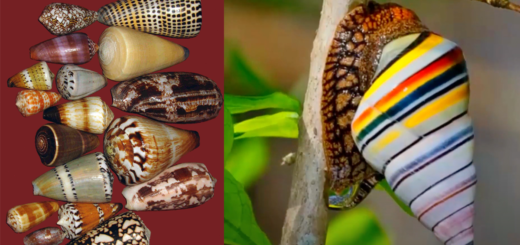A Practically Immortal Animal Is Spreading Across the Planet

For almost every living thing, aging and eventual death are an expected part of the life cycle. It’s the fundamental law of the natural world. So much so that the very idea that an animal could be immortal sounds preposterous. However, there is a bizarre creature that is considered practically immortal.
Aside from this immortal critter, other notable animals and plants live extraordinarily long lives. Even so, they haven’t exactly taken over the planet. Actually, most people may not have ever seen one of those animals or plants in person.
However, in the watery depths, this ‘immortal’ creature has been slowly, quietly spreading across the globe.
Let’s take a close look at one of the world’s only practically immortal creatures.
Discovery of an Immortal Jellyfish
Of all the species on the planet, only Turritopsis dohrnii is considered biologically immortal. Thus, it’s called the immortal jellyfish, a tiny, three millimeter long transparent alien-looking gelatinous blob. Another common name for the species is the Benjamin Button jellyfish, referring to the story about a man who ages in reverse.
Notably, these creatures were first discovered in 1883 in the Mediterranean Sea. However, its life cycle secrets weren’t known to scientists until much later: the mid-90s.
In 1988, a German marine-biology student in his early 20s studied the jellyfish while snorkeling near Portofino’s cliffs. Christian Sommer was studying hydrozoans, creatures that can resemble both a coral and jellyfish during their life cycle.
Examining the jellyfish in a petri dish, Sommer discovered the jellyfish could revert from the adult stage to the earlier polyp stage. Thus, it was as if a butterfly reverted to the caterpillar stage. Notably, the jellyfish refused to die.
Related Read: Some Of The Most Amazing Facts About Jellyfish
From Chicken to Egg, Then Back to Chicken
Although Sommer didn’t know it at the time, other biologists studied his findings and realized what he had found. They compared it to the butterfly analogy and another: a chicken reverting to an egg, only to hatch again. Kind of gives a new twist to the age-old question: Which came first, the chicken or the egg?
Strangely, the discovery of an immortal creature didn’t get much attention outside the academic world. Today, scientists still aren’t sure how it ages in reverse, and there aren’t many experts who study them. One pre-eminent expert is from Japan, Shin Kubota, an Associate Professor at Kyoto University.
See Shin Kubota discuss the immortal jellyfish below:
The Immortal Jellyfish Life Cycle
The two main life cycles of these jellyfish are the polyp and medusa. While most similar hydrozoans die after spawning, Turritopsis dohrnii falls to the ocean floor, turns into a blob, and turns back into a polyp.
If the creature faces hardship, like starvation or injury, it can take this strategy of self-preservation. Thus, it can regenerate its body over and over again. However, most of the time, the jellyfish reproduces and dies like other animals. It’s only when faced with a hardship that it seems to trigger reversion to a polyp.
Below, you can see the other stages in the cycle, from planula to adult medusa.
Video by SciShow:
Unique Powers of Transformation
Like human Stem cells found throughout our body, the jellyfish’s cells can transform into other types of cells, a transdifferentiation process. Unlike humans, the jellyfish’s transformation powers rare in the animal kingdom. Muscle cells can become nerve cells or change into egg or sperm cells.
Studies show there may be other aquatic invertebrates with similar abilities. Today, scientists hope the jellyfish’s regeneration abilities could be applied in new ways to help humans.
A Slow Invasion Across the Seas
Of note, these transforming critters the size of a pinky nail are slowly spreading around the globe, unnoticed. One reason for their spread is they are carried inside the ballasts of ships. Now, they are found in waters across the planet, from Panama to Florida to Spain.
As the jellyfish encounter different temperatures, they adapt. They have eight tentacles in warmer waters, but in cooler water, they grow 24 or more. Also, they may have a bright scarlet bell when found in cooler waters. Using the tentacles, they feed on fish eggs, plankton, and mollusks.
Although they can breed the typical way for jellyfish, with free-floating sperm and eggs, the immortal species also reproduce asexually. One colony of polyps can create an endless chain of genetically identical jellyfish.
Potentials for Science
Many scientists don’t believe these creatures hold the key to immortality. However, not so for the leading expert, Shin Kubota. He believes these jellyfish are the root of the Tree of Life.
“Turritopsis application for human beings is the most wonderful dream of mankind,” he told a New York Times journalist. “Once we determine how the jellyfish rejuvenates itself, we should achieve very great things. My opinion is that we will evolve and become immortal ourselves.”
Kubota needed to care for his jellyfish’s captive population for three hours each day for over 15 years. Strangely, they are complicated to keep in captivity and seldom breed. Although they technically immortal, they often die and remain subject to being eaten or killed; not so immortal, after all, but still, quite impressive.
The Secret to Eternal Youth or Treating Cancer?
Studies of creatures like the immortal jellyfish could reveal something extraordinary, such as a potential cancer treatment. Now, scientists know there is more genetic similarity between humans and jellyfish than one might suspect.
Strangely, we researchers who completed the first full genome sequence of a comb jelly found they could be our most distant animal relative. However, their survival strategies allowed them to endure 500 million years of mass extinctions on Earth.
Studying similar freshwater creatures called Hydra, scientists have learned about genes called FoxO genes also found in humans. Jellyfish sit alongside corals, sea anemones, and Hydra on the Cnidarian branch of animal life. It’s one of the oldest branches on the animal family tree.
Studies show that the FoxO genes in Hyrda play a role in determining lifespan. Unlike in humans, the genes are more often expressed, allowing the creature resembling a polyp jellyfish to remain youthful.
Featured image: Screenshot via YouTube







